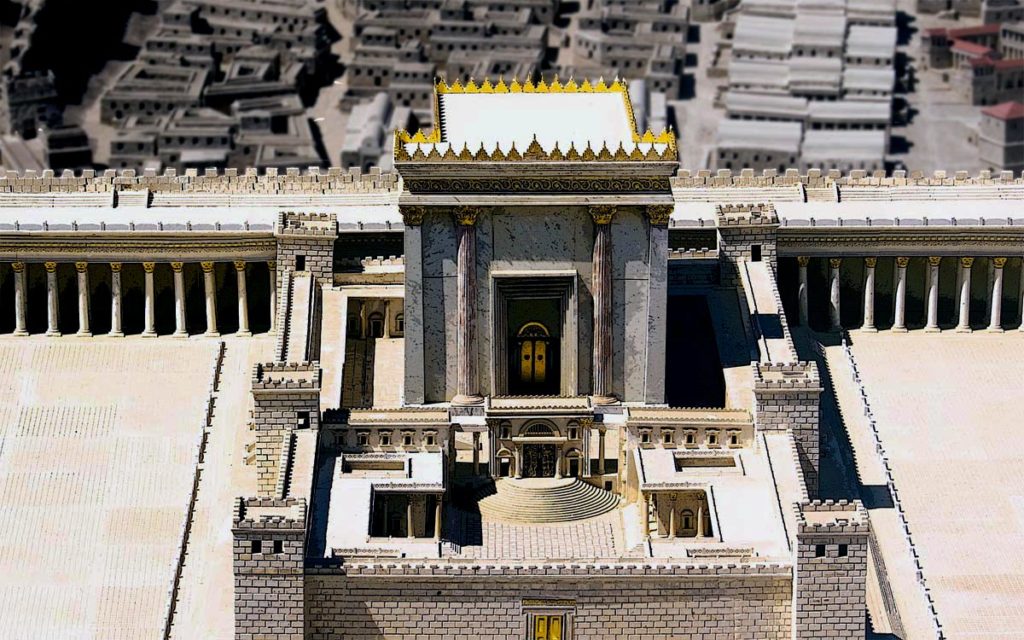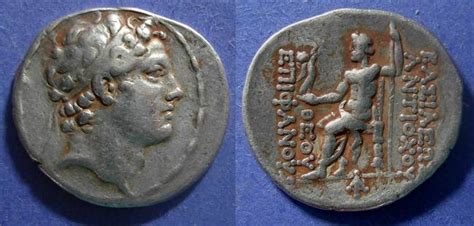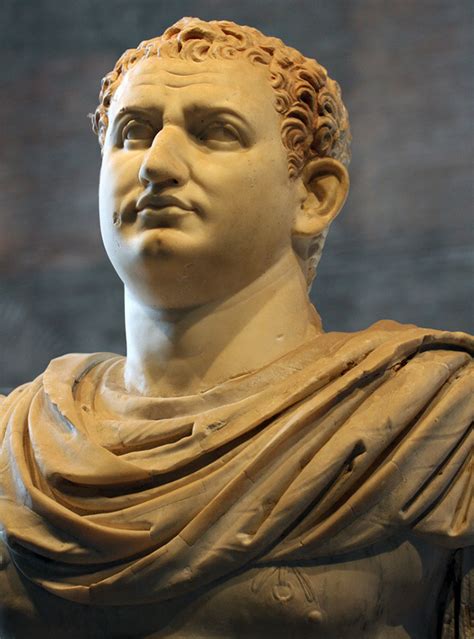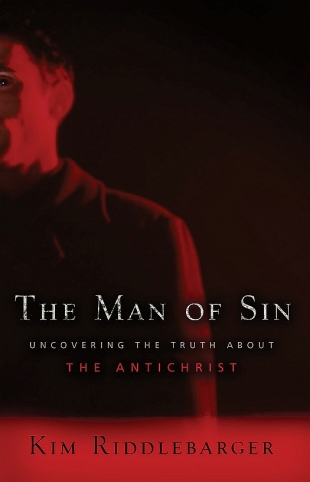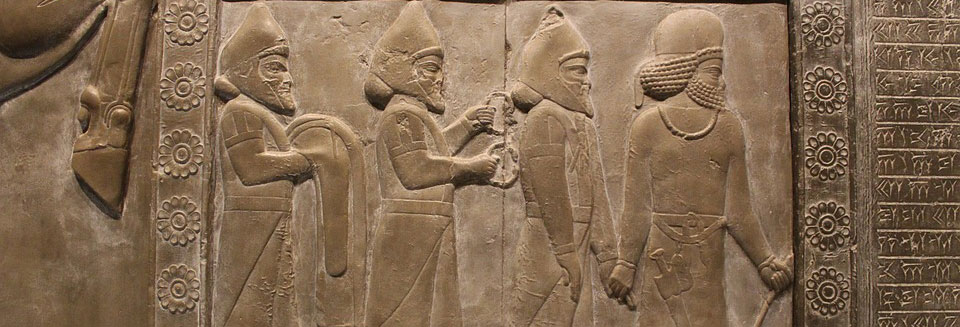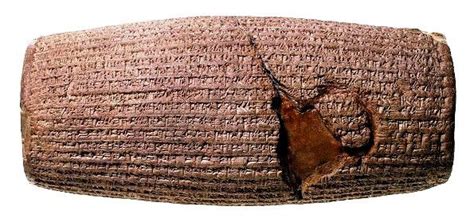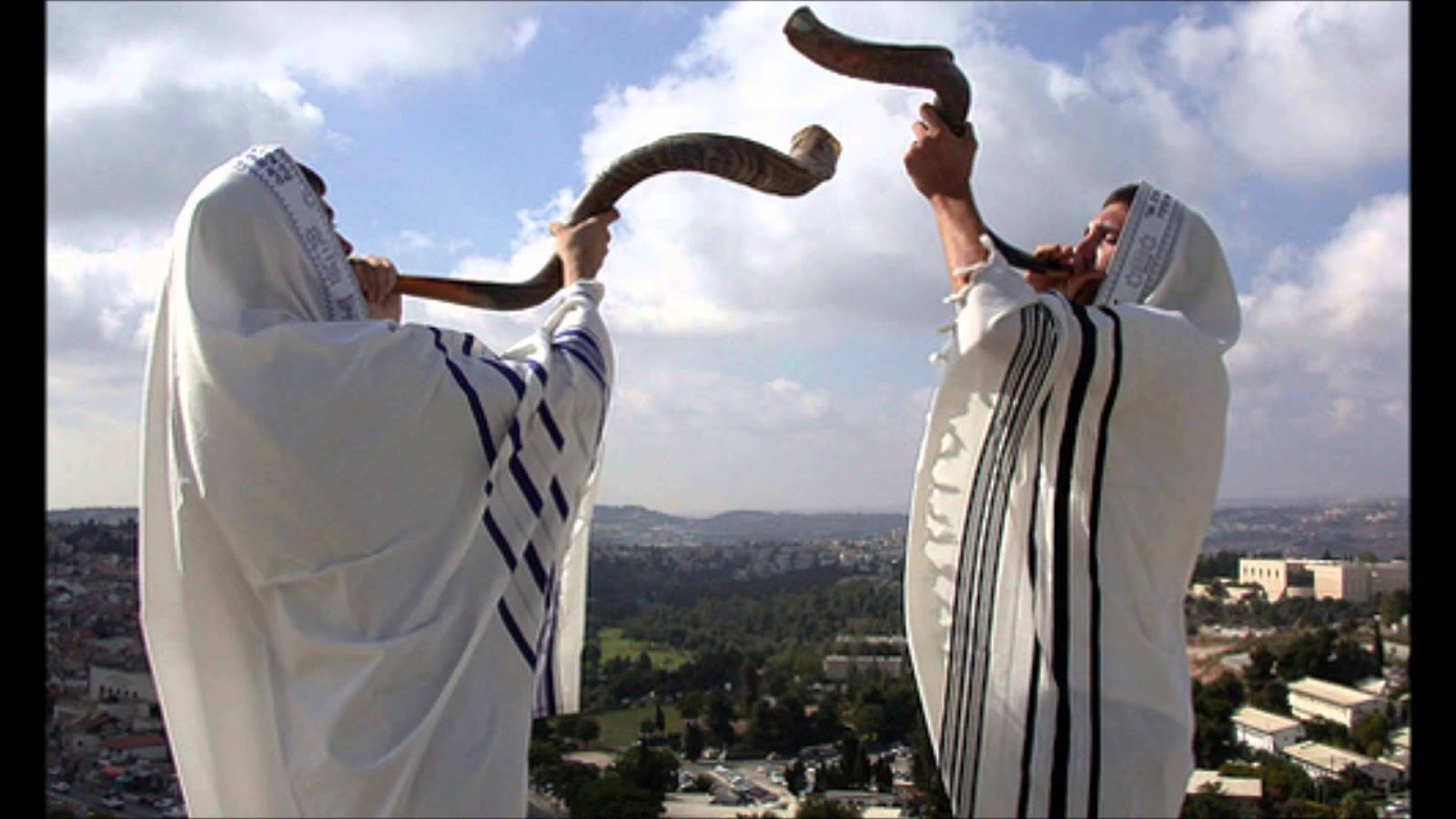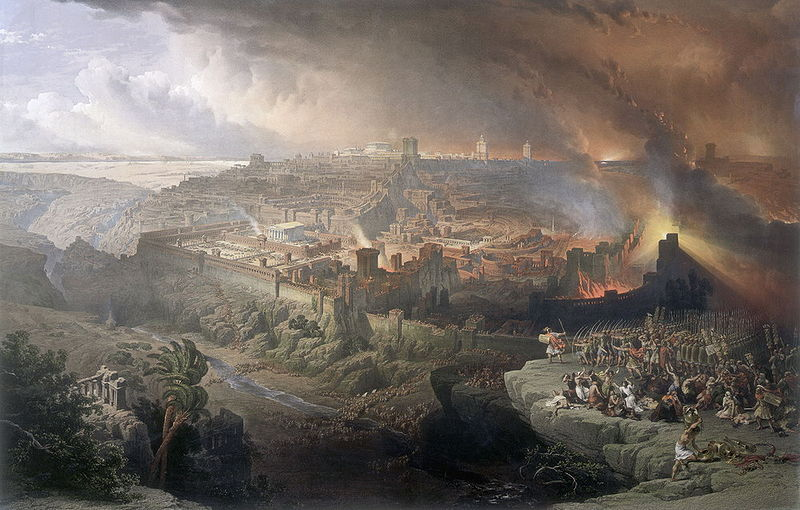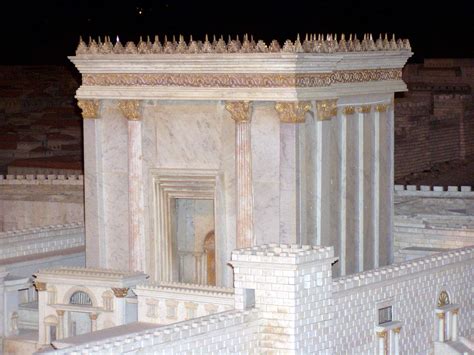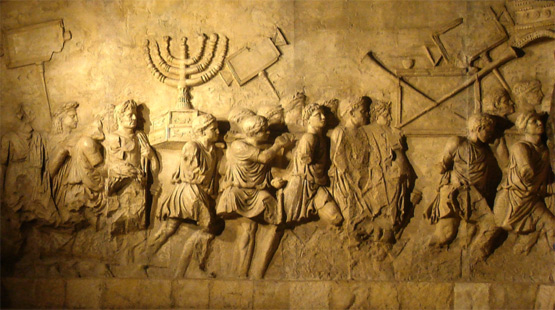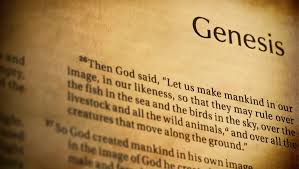II. The Olivet Discourse: Jesus Interprets the Prophecies of Daniel

In the first section of the Olivet Discourse (Matthew 24:1-14), Jesus answers the last question the disciples put to him first. After they ask, “what will be the sign of your coming?” Jesus offers a series of signs in verses 4-14 which inform his disciples of things which they must personally endure between our Lord’s death and resurrection, and the destruction of the temple in A.D. 70. Yet, these signs also extend into the present age. These “signs of the end,” include wars and rumors of wars, earthquakes and famine, the rise of false Christs and heretics, as well as the hatred and persecution of Christ’s disciples by Gentile nations.
Jesus describes increasing wickedness yet to come throughout the age–difficult for postmillennialists and cultural transformationalists to explain. Jesus predicts that hearts will grow cold, the manifestation of innate human sinfulness. In the midst of these tumultuous signs, Jesus says, believers must persevere to the end to be saved (v. 13). But these "signs" are not signs of his absence. Rather, these signs guarantee Jesus’ return. The tumult of the nations and the groaning of the earth, are actually indicators that our Lord will return, not proof of God’s indifference to his creation or his powerlessness to do something about it.
But Jesus gives another sign, one which indicates these things extend beyond the destruction of Jerusalem into the present age. Says Jesus, the gospel must be preached to all nations before the end can come (v. 14). This becomes the mission of Christ’s church until the end of the age, as is clear from our Lord’s final instructions to his disciples recorded at the end of Matthew’s Gospel, the so-called Great Commission. “All authority in heaven and on earth has been given to me. Go therefore and make disciples of all nations, baptizing them in the name of the Father and of the Son and of the Holy Spirit, teaching them to observe all that I have commanded you. And behold, I am with you always, to the end of the age” (Matthew 28:20). With these words, Jesus gives his church its missionary mandate–go into all the world and make disciples. This mission must be completed before Jesus returns at the end of the age (v. 14).
In the second section of the Olivet Discourse (vv. 15-28), Jesus answers the disciple’s question about the destruction of the temple– “when will these things happen?” i.e., “when will the temple be destroyed?” Jesus warns them of a period of great tribulation yet to come, a time of tribulation unsurpassed in Israel's history.
Many commentators believe that the horrors of which Jesus speaks are so great that he must be referring to a distant future event associated with the Antichrist and Battle of Armageddon. But there are good reasons to think that Jesus is speaking about the events of A.D. 70–just forty years or so in the future from the time of the Discourse. Recall that the disciples’ questions are prompted by Jesus’ comments about Israel’s coming desolation and the destruction of the temple. Here we find Jesus’ answer to the disciple’s question about the destruction of the temple–especially in light of a parallel passage in Luke 21:20-21. There, Luke records Jesus telling the disciples “when you see Jerusalem surrounded by armies, then know that its desolation has come near. Then let those who are in Judea flee to the mountains, and let those who are inside the city depart, and let not those who are out in the country enter it.” A Roman siege will lead to the destruction of the city and the desolation of the temple. Jesus also switches subjects from the preaching of the gospel to the nations, to the frightening prophecy of an abomination which will render the temple “desolate.” It is clear that Jesus is describing what lies ahead for Israel (desolation), and for the temple (its destruction).
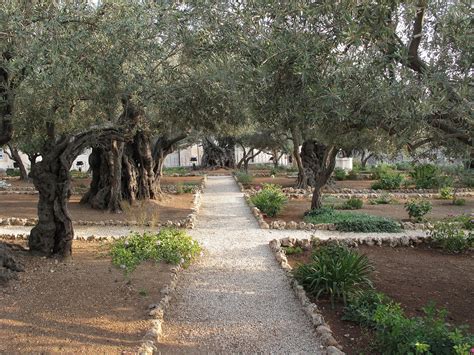
In his warning of verse 15 of Matthew 24, Jesus makes two additional prophetic predictions drawn from Daniel 9:24-27 and from Daniel 12. Both of these prophetic texts speak of an idolatrous image which will be set up on the altar of the temple at the time of the destruction of the city. It is this abominable image which renders the temple “desolate” [Hagner, Matthew 14-28, 699-700]. Says Jesus, “so when you see the abomination of desolation spoken of by the prophet Daniel, standing in the holy place (let the reader understand), then let those who are in Judea flee to the mountains.” Jesus quotes from the Seventy Weeks prophecy of Daniel 9, referring in part to Israel’s not too distant past, when Antiochus Ephiphanes profaned the temple during the Maccabean wars (in 163 B.C.) by slaughtering a pig on the altar and then erecting a pagan statute in the Holy of Holies.
Every Jew knew this story from Israel’s history. They also knew what such an abomination entailed–the temple was rendered “unclean.” Jesus evokes this familiar image to characterize what will happen to the temple yet again, only this time in such a way to make the profanation of the temple by Antiochus pale by comparison.
When Jesus evokes the prophecies in Daniel 9 and 12, in effect, he claims to be the true interpreter of Daniel’s mysterious vision. He now tells the disciples (and us) that the prophecies of Daniel regarding this terrible abomination are yet future, and were not completely fulfilled by the events of 163 BC. Jesus warns his disciples, when you see this abomination standing in the temple, rendering it unclean, “let the reader understand.”
This is a reference to chapter 8 of Daniel’s prophecy, in which Daniel was struggling to understand the meaning of the vision God gave him about the time of the end. By adding these words, “let the reader understand,” Jesus is explaining the mysteries which Daniel revealed, but was never able to fully explain. The desolation of the temple by Antiochus is therefore but a foreshadowing of another desolation yet to come, one which does fulfill Daniel’s prophecy of the Seventy Weeks. Jesus is speaking of desolation far more horrific and explicitly connected to the coming destruction of the city of Jerusalem. This was every pious Jew’s greatest fear–the temple would become desolate and the people would be hauled off into captivity yet again, to suffer and die in a land not their own. This is what Jesus predicts. And this is what happens.
Jesus not only warns of a desecration of the temple, he also warns of a great calamity to come upon the entire nation–a calamity which comes to pass when the temple is desecrated. Says Jesus in verse 16, “then,” (at the time you see the abomination in the temple), “let those who are in Judea flee to the mountains.” The moment the temple is profaned, it is time to go! The apostolic church remembered these words of Jesus. When it became clear that Rome was going to use great force to put down the ever-growing Jewish rebellion in the latter part of AD 66-67, those Christians remaining in Jerusalem began to relocate to the hill country north of Judea, the same place where the Jews hid during the Macabbean wars [Hagner, Matthew 14-28, 701].
This crisis will come to pass quickly and the consequences will be great. In verses 17-20, Jesus warns his disciples, “let the one who is on the housetop not go down to take what is in his house, and let the one who is in the field not turn back to take his cloak. And alas for women who are pregnant and for those who are nursing infants in those days! Pray that your flight may not be in winter or on a Sabbath.” There is a loud echo in these words of the warning given to Lot, when Sodom and Gomorrah are destroyed (Genesis 19:14-15). "Don’t look back!" There are also cultural reasons for this warning as well. First century Jewish dwellings often utilized the roof area as a kind of deck-patio. If the abomination occurs when you are on your roof relaxing, don’t go down into the house to pack. Flee! Don’t even stop to pick up clothing! Things will be so dreadful that women who are pregnant, or who have small children, will have an especially difficult time. The disciples are exhorted to pray that this will not happen during bad weather (the winter) or on the Sabbath, when the Sabbath observance of many Jewish Christians would make travel very difficult [Hagner, Matthew 14-28, 701-702].
Perhaps Jesus' most troubling statement follows in verse 21: “for then there will be great tribulation, such as has not been from the beginning of the world until now, no, and never will be.” Jesus speaks of this coming tribulation as so great that nothing has or will ever equal it, past or future. A number of commentators argue that tribulation of this magnitude obviously hasn’t happened yet, and therefore cannot be referring to the events of A.D. 70. But this ignores the fact that this prophetic warning is given by Jesus to the generation then living, who will see the destruction of Jerusalem in the near future, the same people who are to flee from Jerusalem when they see the abomination in the temple!
The horrors which will come upon Jerusalem in A.D. 70, will be the worst events that Jerusalem has ever, or will ever experience. Jesus says it will be far greater than the destruction of the temple in 587 BC. It will be greater than the desolation of 163 B.C. at the hands of Antiochus Epiphanes. Desolation will fall upon the temple and the people. As a result, they will be dispersed to the end of the earth. Anyone who has read Josephus’ description of the Roman siege of Jerusalem, including the terrible famine and infant cannibalism, cannot help but be moved by the unspeakable horrors the Jewish people endured while the Roman army crushed the revolt and then burned the temple to the ground. Once the temple burned–accidentally, by the way, and against Titus’ orders–the soldiers were eager to retrieve the gold which melted and flowed down into the drainage system between the stones of the temple. The soldiers went to great effort overturn the huge stones of the burned out building to retrieve the gold. As Jesus predicted, not one stone was left standing upon another.
Yet, Jesus goes on to speak not of final judgment which comes at his Parousia [his coming] at the end of the age, but of God’s grace in restraining the evil forces which fall upon the inhabitants of Jerusalem. Says Jesus in verse 22, “and if those days had not been cut short, no human being would be saved. But for the sake of the elect those days will be cut short.” As God restrained his judgment on Sodom, because the presence of believers–i.e., the “righteous,” so too, even as Israel becomes desolate and as the temple is destroyed, God will shorten the days of judgment for the sake of his elect, a reference to Christians living in Jerusalem at the time of the cities’ destruction, and whom God will deliver, even in the midst of the judgment to come upon Israel. Israel will be cut off, the Jews dispersed. But God will preserve his people, even under the worst of circumstances.

In verse 23, Jesus returns to the theme which he addressed earlier in verse 4, the inevitable appearance of false Christs and deceivers who will plague God’s people until the end of the age and final judgment. By returning to this theme in connection with the judgment to come upon Israel, Jesus makes the point that the destruction of the temple and the city is not the Parousia, nor the end of the age. The presence of false Christs will be a threat to Christ’s church, even after the temple is destroyed [Hagner, Matthew 14-28, 704-705]. Jesus says “then if anyone says to you,” in the aftermath of the confusion generated by the great tribulation to come upon Israel, “‘Look, here is the Christ!’ or ‘There he is!’ do not believe it. For false Christs and false prophets will arise and perform great signs and wonders, so as to lead astray, if possible, even the elect, at that time.” The judgment of A.D. 70 will be a breeding ground for messianic pretenders. Christians are warned not to be taken in by them [R. T. France, Matthew, 342]. Jesus warns us, “See, I have told you beforehand. So, if they say to you, ‘Look, he is in the wilderness,’ do not go out. If they say, ‘Look, he is in the inner rooms,’ do not believe it.”
Jesus also warns of those who will come and perform amazing signs and wonders, attempting to lead God’s elect astray–those whom he has preserved from the great tribulation to come upon Israel. But, Jesus says, God’s people will be able to discern such false teachers and deceivers. Whenever someone claims to be a “Christ,” the very manner of their coming, “out in the desert,” or in some private or secret place, betrays the fact that they are liars and warns us that we are to have nothing to do with them.
More to the point, in verse 27, Jesus says his coming will not be a secret or isolated event. “For as the lightning comes from the east and shines as far as the west, so will be the coming of the Son of Man.” Our Lord’s return is no secret, but visible to the entire earth. This is problematic for those who hold to a rapture of Gentile believers (which only Christians experience). It also demonstrates the implausibility of preterism. Jesus’ point is that his own Parousia [coming] at the end of the age “will happen in such a sudden and dramatic way [that it is] incapable of being missed.” This is why we are not to listen to claims that Christ has already come–no matter how many miracles the claimants may perform. Our Lord’s return is not private, but will be witnessed by the entire world.
When the disciples asked him, “what will be the sign of his coming?” Jesus answers, "for as the lightning comes from the east and shines as far as the west, so will be the coming of the Son of Man.” There will be no secret rapture. Nor can this “coming” be limited to or fulfilled by the events of A.D. 70. Our Lord’s coming is a cosmic event, like lightening flashing across the sky. It will be impossible to miss. Jesus even tells them where his coming will take place–Wherever the corpse is, there the vultures will gather.” The image of flesh-eating birds gorging upon the dead is drawn from the Old Testament–Habbakuk 1, Job 39, Ezekiel 39–and refers to the day of judgment yet to come at the end of the age when the Son of Man returns on the clouds in glory and power [Hagner, Matthew 14-28, 707]. The coming of Jesus Christ at the end of the age, will not be something which can be missed. This is why we must not listen to reports that the Christ has come in some far away corner, or in secret.
In the third section of the Olivet Discourse (vv. 29-44 of Matthew 24) Jesus speaks directly to the question about his coming at the end of the age. Having made it clear that the destruction of the temple, while a period of unsurpassed tribulation for Israel, is not the end of the age, Jesus now answers the disciple’s question about the timing and nature of his coming in judgment (his second advent).
After describing the signs of his coming, Jesus moves on to describe his return [Ridderbos, Matthew, 447]. The issue is, “how is what follows is connected to the preceding?” As Jesus states in v. 29, “immediately after the tribulation of those days the sun will be darkened, and the moon will not give its light, and the stars will fall from heaven, and the powers of the heavens will be shaken.’” There are a number of questions here which much be answered if we are to interpret these words correctly. Is Jesus speaking of the events of the destruction of the temple in A.D. 70–immediately after the tribulation of those days–giving credence to the preterist view that the coming spoken of did occur in A.D. 70? Or is Jesus speaking of the tribulation of the entire period from the days of his death and resurrection to the destruction of the temple, and which extends on into the present age? There good reasons to embrace the latter position, and to understand Jesus as speaking about his second advent at the end of the age.
Jesus’ words echo Isaiah 13:9-11, which speak of the Day of the Lord as characterized by cosmic signs and final judgment. In the words of Isaiah–“behold, the day of the Lord comes, cruel, with wrath and fierce anger, to make the land a desolation and to destroy its sinners from it. For the stars of the heavens and their constellations will not give their light; the sun will be dark at its rising, and the moon will not shed its light. I will punish the world for its evil, and the wicked for their iniquity; I will put an end to the pomp of the arrogant, and lay low the pompous pride of the ruthless.” The picture given us by the prophet is one of a day of judgment yet to come upon the entire world, a day in which the heavens will convulse. While this can be said, in part, about the events of A.D. 70 and the destruction of the temple and Jerusalem, the words of Isaiah’s prophecy make it difficult to localize this to events surrounding the desolation of Israel. These signs are cosmic and universal and associated with final judgment. As we will see in the following, Jesus will not only echo the words of Isaiah, he will apply these words to himself.
But why would Jesus say that this coming occurs immediately after the tribulation of those days–i.e., after Israel is left desolate? As Jesus will go on to declare in verse 36, “concerning that day and hour no one knows, not even the angels of heaven, nor the Son, but the Father only.” Jesus indicates that his return, of which he is now speaking, cannot be fulfilled by the events of A.D. 70, precisely because he has just told his disciples the exact time when Jerusalem and the temple will be destroyed–when you see the abomination that makes desolate standing in the temple! When that happens it is time to flee! From verse 29 on, Jesus is speaking about an event about which no one can know the day or the hour, only his Father in heaven. This cannot be limited to the events of A.D. 70.
The reason Jesus does this is surely intentional–the tension between signs which precede his coming contrasted with the suddenness of his coming is set forth so that his people will live every moment in light of the promise of his coming because the signs of the end point to his return. And yet, not knowing the day or the hour when Jesus will come again, we are to live every moment to its fullest, going about our divinely mandated task of fulfilling the cultural mandate: marrying and raising our families, fulfilling our callings and vocations, etc. As a church, we are to take the gospel to the ends of the earth--the Great Commission. This is the same tension we find throughout the New Testament between the already and the not yet. The signs which point to the certainty of our Lord’s return stand in contrast to the teaching about suddenness and unexpected nature of his return, about which no one knows the day or the hour [C. E. B. Cranfield, The Gospel According to Mark, 402; Ridderbos, Matthew, 447 ff,]. The reason for this tension will become clear shortly.
From verse 29 on, Jesus' point is that his coming will shake the heavens, picking up on the earlier image he gave of lightening flashing from east to west in verse 27. When Jesus returns, “the sun will be darkened, and the moon will not give its light, and the stars will fall from heaven, and the powers of the heavens will be shaken.” These are cosmic signs. No one is going to miss it! No secret rapture here.
In fact, Jesus goes on to say in verse 30, that when the heavens are shaken, “then will appear in heaven the sign of the Son of Man, and then all the tribes of the earth will mourn, and they will see the Son of Man coming on the clouds of heaven with power and great glory.” Jesus will define what he means by this “sign of the Son of Man” in the next verse, but it is important to note that he is speaking of the final judgment–all the nations of the earth will mourn at the sight of his coming. In Revelation 6:15-17, we read, “then the kings of the earth and the great ones and the generals and the rich and the powerful, and everyone, slave and free, hid themselves in the caves and among the rocks of the mountains, calling to the mountains and rocks, “Fall on us and hide us from the face of him who is seated on the throne, and from the wrath of the Lamb, for the great day of their wrath has come, and who can stand?”
Jesus’ words also echo the prophecy of Zechariah 12:10-13:1. “I will pour out on the house of David and the inhabitants of Jerusalem a spirit of grace and pleas for mercy, so that, when they look on me, on him whom they have pierced, they shall mourn for him, as one mourns for an only child, and weep bitterly over him, as one weeps over a firstborn. On that day the mourning in Jerusalem will be as great as the mourning for Hadad-rimmon in the plain of Megiddo. The land shall mourn, each family by itself: the family of the house of David by itself....`On that day there shall be a fountain opened for the house of David and the inhabitants of Jerusalem, to cleanse them from sin and uncleanness.’” The nations will weep at the time Jesus appears, because it is the day of judgment, and the judge is the one whom the nations have crucified with sinful hands. Jesus died for the sins of the world (the cleansing fount), but the nations, just like Israel have rejected him. On that day they will be overcome with grief.
But what, exactly, is the sign of the coming of the Son of Man? Jesus tells us in verse 31, “he will send out his angels with a loud trumpet call, and they will gather his elect from the four winds, from one end of heaven to the other.” When Jesus speaks of this coming as occurring immediately after the tribulation of those days, this cannot be confined to God’s judgment upon Israel. The Son of Man will come in great glory. His coming will be heralded with cosmic signs and the trumpet call of God, the sign of final judgment. In that day the great prophecy of Daniel 7:13-14 will be fulfilled– “I saw in the night visions, and behold, with the clouds of heaven there came one like a son of man, and he came to the Ancient of Days and was presented before him. And to him was given dominion and glory and a kingdom, that all peoples, nations, and languages should serve him; his dominion is an everlasting dominion, which shall not pass away, and his kingdom one that shall not be destroyed.” This is that dreadful day when the trumpet sounds, and when the angels appear to gather God’s elect from the ends of the earth. This is the day when the everlasting kingdom of the “Son of Man” of Daniel’s vision comes into its fulness.
Returning to a theme he used earlier, Jesus speaks again of the fig tree. It makes a perfect object lesson in the present context. “From the fig tree learn its lesson: as soon as its branch becomes tender and puts out its leaves, you know that summer is near.” In a world dominated by agriculture, the images Jesus used were familiar and powerful. When the fig tree buds and produces leaves, summer is near, i.e., the temple and Jerusalem are soon to be destroyed and Israel left desolate. Given that the signs of the end are also present and continue on past the events of A.D. 70, the coming of the Son of Man is both immanent and inevitable, even though he himself has not yet appeared in his glory. From the fall of Jerusalem until this very moment, the universe groans, longing for the coming of the Son of Man to make all things new. The signs he has given tell that Jesus is right at the door, but that he has not yet returned because the end of the age has not yet come.
In verse 34, Jesus warns “truly, I say to you, this generation will not pass away until all these things take place.” Since Jesus has said that his coming is near, and the people listening to him will see the abomination which makes desolate standing in the holy place, so too, Jesus tells his disciples that all of these things, i.e., all of the signs of which he just spoken, including the sign of the destruction of the temple and the city will come to pass before the generation to whom Jesus is speaking passes away. If, as our dispensational friends argue, that Jesus is speaking to us at the end of the age, and that this reference to the fig tree points to the modern nation of Israel, then Jesus never does answer the disciple’s question about the destruction of the temple, but allows them to think he is doing so.
Since Israel became a nation in 1948, over sixty years have come and gone–far more than a generation. I have books from one dispensational writer defining a generation as 30 years, another as 33, another as 40. Jesus is speaking to his disciples and answering their query. He is not speaking about the birth of the modern nation of Israel. The signs of the end were present from the beginning and the temple was destroyed with Jerusalem becoming desolate exactly as he predicted. Only God in human flesh could predict the future, much less utter the following sentence–“heaven and earth will pass away, but my words will not pass away.” This is perhaps our Lord’s strongest assertion of deity yet. His words, being the word of God, will never pass away–though the heavens and the earth will. The reason Jesus can speak of the future with such certainly is because his words are the words of God.
And yet, while the signs of the end can be known and to some degree understood, the timing of our Lord’s return remains a mystery–intentionally so. Says Jesus, in words so clear to as be beyond misinterpretation, “but concerning that day and hour no one knows, not even the angels of heaven, nor the Son, but the Father only” (v. 36). If, in his incarnation and humble estate, Jesus laid aside certain divine prerogatives and chose not to know the hour of his coming, we can be sure that no one else does either. About the only time when we can be sure that the Lord will not come back is when someone sets a date predicting his return! We are all precluded from date setting, and from listening to those who do. Though certain signs precede his coming, no one knows the day or hour of his return, and anyone who says he does is either deceived or a deceiver.
In verses 37-44, Jesus comes to the reason as to why he leaves his disciples with the tension between the signs which precede his coming and the suddenness and unexpected nature of his return. God’s people are to be ready for the return of Jesus Christ. Says Jesus to us, watch! Once again, Jesus returns to the prior course of redemptive history to explain the future. “For as were the days of Noah, so will be the coming of the Son of Man. For as in those days before the flood they were eating and drinking, marrying and giving in marriage, until the day when Noah entered the ark, and they were unaware until the flood came and swept them all away, so will be the coming of the Son of Man.” In the days of Noah, God’s judgment was swift and universal–the great flood destroyed the earth and its inhabitants.
Jesus' use of the Noah story lends great weight to the fact that he is speaking of final judgment upon the wicked–not a temporal judgment upon unbelieving Israel in A.D. 70, but when the Son of Man returns at the end of the age. Though the signs of his coming are present for all to see, the nations will go about their business, oblivious to the signs of the times and the certainty of final judgment. While believers are to live life to its fullest, they also wait in eager expectation of the coming of the Son of Man. Non-Christians will be swept away in the judgment yet to come, not realizing what is happening to them until it is too late.
In verses 40-41, Jesus goes on to speak of this judgment in more detail. “Then two men will be in the field; one will be taken and one left. Two women will be grinding at the mill; one will be taken and one left.” Indifferent to the fate that is about to befall them, Jesus describes people going about their everyday activities, preoccupied by the things of this world, when they are caught unawares by his return and the judgment yet to come. Jesus will separate humanity into two categories–those who are taken away and those left behind. In light of verse 31, it is presumably believers who are “taken” to be with Jesus. These are God’s elect and are gathered from the four corners of the earth by the legions of the heavenly host who accompany the Son of Man at his coming. Jesus spoke earlier of wheat and tares growing together until the day of judgment (his return) when the tares are thrown into the fire. Jesus will continue to do this in the next chapter of Matthew (25) when he speaks of sheep and goats, one group receiving the blessings of the kingdom, the others receiving eternal judgment. From these words in the Olivet Discourse, it is clear that those left behind now face certain judgment.
In verse 42, we come to the heart of the Olivet Discourse–Jesus’ exhortation to his disciples to watch for his coming, an exhortation couched in the tension between the signs which precede his coming and the unexpected suddenness of his return. Says Jesus, in light of everything he has just told them, “Therefore, stay awake, for you do not know on what day your Lord is coming.” Rather than focus upon the date of his coming, Jesus plainly tells his disciples to concentrate on being ready at any time, since it is impossible to know that date of his coming. Watch, Jesus says. Keep vigil. Be alert.
To make this case more powerfully Jesus uses a simple analogy and then identifies himself as the mysterious “Son of Man” from Daniel’s vision. “But know this, that if the master of the house had known in what part of the night the thief was coming, he would have stayed awake and would not have let his house be broken into. Therefore you also must be ready, for the Son of Man is coming at an hour you do not expect.” Yes, signs will precede his coming. But his coming will be unexpected. Since we don’t know when the thief is coming, we must be watchful all the time, ever diligent, always prepared.
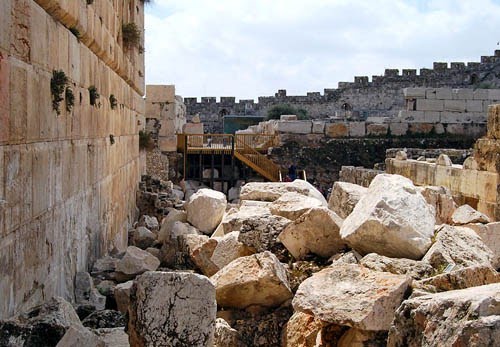
What does the Olivet Discourse tell us about Daniel's Seventy Weeks? With the advantage of two-thousand years of hindsight, we can see how Jesus’ words to his disciples came to pass exactly as foretold in Daniel 9:24-27. The nation of Israel has been cut off and left desolate, the Jews dispersed into all the earth, and only now have they returned to their ancient home. The city of Jerusalem was destroyed as was Herod’s magnificent temple by Rome’s army in A.D. 70–not one stone was left upon another–a time of tribulation unsurpassed in Israel’s history. But Jesus’ words have not passed away, the signs of the end of the age continue on to the present day. There are wars and rumors of wars. There are earthquakes, false Messiahs, and persecution and the on-going martyrdom of God’s people. The gospel is being preached to all nations just as Jesus said it would. Daniel’s prophecy points ahead to Jesus’ messianic mission, and beyond that, to the very end of the age.
Jesus’ words about his second coming are spoken in such a way as to create a tension between signs which precede his coming and the fact that his coming would be sudden and unexpected. As the disciples were to watch for the abomination which makes desolate (as foretold in Daniel 9), so too are God’s people in all ages to watch for the sign of the Son of Man (foretold in Daniel 7). For two thousand years people have gone about their business, just as it was in the days of Noah. Non-Christians see the signs of the end and laugh and scoff, "where is this coming that he promised?" But as the city of Jerusalem was laid bare and the temple utterly destroyed, so will it be in the day of judgment.
In the Olivet Discourse, Jesus leaves us with several points which reflect his interpretation of Daniel’s prophecies (including the Seventy Weeks prophecy). First, Jesus warns that Israel will be cut off, and the temple destroyed. When the temple is desecrated by Roman armies it is time for God’s people to flee to the hills. The Roman army will surround the city and crush the rebellion. It will be a time of tribulation greater than anything the nation and its temple had ever experienced or will ever experience. As a result of Israel being left desolate, the Jews will be dispersed to the ends of the earth. As Jesus tells his disciples these difficult and astonishing things, he appeals to the prophecy of Daniel written nearly six centuries earlier. In fact, these prophecies are fulfilled in such exacting detail, that critics of the Bible must go to great lengths to argue that these words were put back into Jesus’ and Daniel’s mouths after these things had come to pass. But the first-century Christians of Palestine remembered these words, and many of them left Jerusalem when they saw the Roman siege, sensing that the things of which Jesus warned them nearly forty years earlier were soon to come to pass.
Second, Jesus reminds his disciples that God will preserve his people in the midst of whatever persecution he might allow as the end draws near. The same Savior promised to return in judgment, has also promised that the Gates of Hell cannot prevail against his church. We see this in the fact that Israel’s tribulation was cut short for God’s elect and God’s people are warned in advance to flee so as to escape it. Here we see God’s grace restraining evil, even in the midst of the great tribulation. God will never give us more than we can bear and he will always provide a way of escape. This is his promise.
Third, Jesus also warns us to always be on our guard for false Christs and miracle workers, who arrive on the scene, performing signs and wonders so as to deceive God’s elect. We are not to listen to them. We are not to be taken in by them. We must resist them with the gospel. For Jesus himself says his coming will not be secret. It will not occur in some private meeting room, nor in some far away corner of the world. “For as the lightning comes from the east and shines as far as the west, so will be the coming of the Son of Man. This then, beloved is our blessed hope as we watch the signs of times, and go about our divinely mandated duty of preaching the gospel to all nations as we await the coming of the Son of Man to judge the world, raise the dead and make all things new. For when he appears in the clouds with great glory, we shall be made like him.
Finally, we will see in Daniel's Seventy Weeks prophecy a remarkable messianic promise of a coming redeemer, who will atone for sin, and bring in an everlasting righteousness. It is to this prophecy we turn next time.
Part One: The Seventy Weeks of Daniel -- An Interpretation of Daniel 9:24-27
 Tuesday, August 11, 2020 at 10:07AM
Tuesday, August 11, 2020 at 10:07AM 


